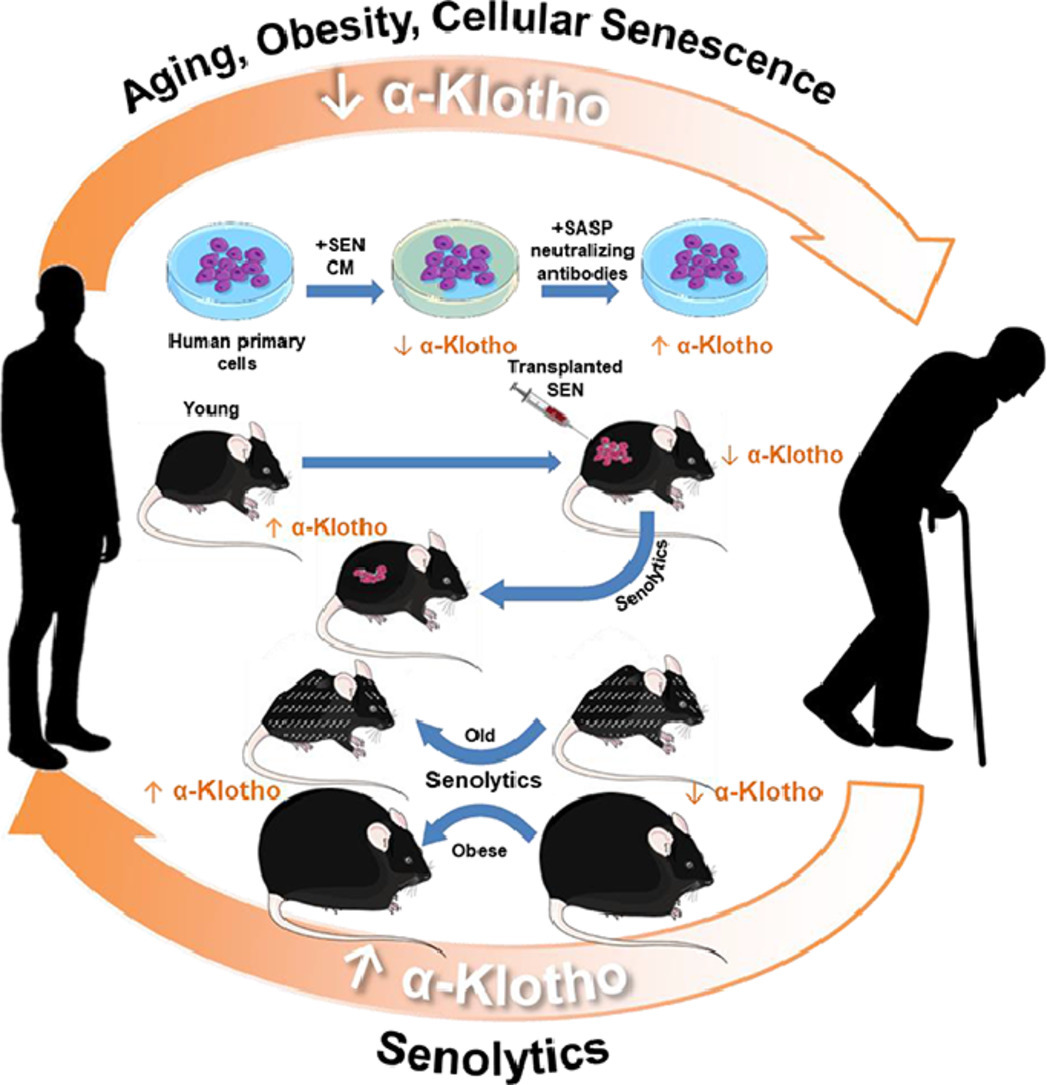Publication Spotlight: Orally-active, Clinically-translatable Senolytics Restore α-Klotho in Mice and Humans
Mar 18th 2022

Orally-active, clinically-translatable senolytics restore α-Klotho in mice and humans
Yi Zhu, Larissa G.P. Langhi Prata, Erin O. Wissler Gerdes, Jair Machado Espindola Netto, Tamar Pirtskhalava, Nino Giorgadze, Utkarsh Tripathi, Christina L. Inman, Kurt O. Johnson, Ailing Xue, Allyson K. Palmer, Tingjun Chen, Kalli Schaefer, Jamie N. Justice, Anoop M. Nambiar, Nicolas Musi, Stephen B. Kritchevsky, Jun Chen, Sundeep Khosla, Diana Jurk, Marissa J. Schafer, Tamar Tchkonia, James L. Kirkland
eBioMedicine, 2022, 103912,ISSN 2352-3964
Abstract: Summary Background
α-Klotho is a geroprotective protein that can attenuate or alleviate deleterious changes with ageing and disease. Declines in α-Klotho play a role in the pathophysiology of multiple diseases and age-related phenotypes. Pre-clinical evidence suggests that boosting α-Klotho holds therapeutic potential. However, readily clinically-translatable, practical strategies for increasing α-Klotho are not at hand. Here, we report that orally-active, clinically-translatable senolytics can increase α-Klotho in mice and humans.
Methods
We examined α-Klotho expression in three different human primary cell types co-cultured with conditioned medium (CM) from senescent or non-senescent cells with or without neutralizing antibodies. We assessed α-Klotho expression in aged, obese, and senescent cell-transplanted mice treated with vehicle or senolytics. We assayed urinary α-Klotho in patients with idiopathic pulmonary fibrosis (IPF) who were treated with the senolytic drug combination, Dasatinib plus Quercetin (D+Q).
Findings
We found exposure to the senescent cell secretome reduces α-Klotho in multiple nonsenescent human cell types. This was partially prevented by neutralizing antibodies against the senescence-associated secretory phenotype (SASP) factors, activin A and Interleukin 1α (IL-1α). Consistent with senescent cells’ being a cause of decreased α-Klotho, transplanting senescent cells into younger mice reduced brain and urine α-Klotho. Selectively removing senescent cells genetically or pharmacologically increased α-Klotho in urine, kidney, and brain of mice with increased senescent cell burden, including naturally-aged, diet-induced obese (DIO), or senescent cell-transplanted mice. D+Q increased α-Klotho in urine of patients with IPF, a disease linked to cellular senescence.
Interpretation
Senescent cells cause reduced α-Klotho, partially due to their production of activin A and IL-1α. Targeting senescent cells boosts α-Klotho in mice and humans. Thus, clearing senescent cells restores α-Klotho, potentially opening a novel, translationally-feasible avenue for developing orally-active small molecule, α-Klotho-enhancing clinical interventions. Furthermore, urinary α-Klotho may prove to be a useful test for following treatments in senolytic clinical trials.
Funding
This work was supported by National Institute of Health grants AG013925 (J.L.K.), AG062413 (J.L.K., S.K.), AG044271 (N.M.), AG013319 (N.M.), and the Translational Geroscience Network (AG061456: J.L.K., T.T., N.M., S.B.K., S.K.), Robert and Arlene Kogod (J.L.K.), the Connor Group (J.L.K.), Robert J. and Theresa W. Ryan (J.L.K.), and the Noaber Foundation (J.L.K.). The previous IPF clinical trial was supported by the Claude D. Pepper Older Americans Independence Centers at WFSM (AG021332: J.N.J., S.B.K.), UTHSCA (AG044271: A.M.N.), and the Translational Geroscience Network.














